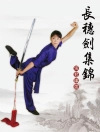The content in this special two-volume anthology details the many facets of aikido as it was formulated by Morihei Ueshiba (1883-1969). Each chapter contributes to a piece of the aikido puzzle by providing historical details, insightful technical drills (bare handed and with weapons), and components that have flavored this art with a spiritual essence.
From the Ueshiba wellspring flows a number of streams-political splinter groups offering their own take on what aikido should be and how it should be practiced. Each branch may stand on its own, but a good number of scholars and practitioners prefer a more encompassing representation of what O-Sensei taught. So, chapters in these volumes help ‘put Humpty Dumpty back together again.’
Volume I includes ten chapters and volume II another fourteen. The authors-twenty-three in all-present superb credentials as scholars and practitioners of aikido. On the academic side, you’ll find chapters that detail aikido’s philosophy, from ethical relationships and practical theory to the subtle spiritual dimension. A few authors highlight the circumstances regarding the transmission of aikido from teacher to student. Some authors show how culture influences the perception and understanding of aikido when it travels outside Japan.
Composed of material previously published in the Journal of Asian Martial Arts, this two-volume anthology is heavy on the technical aspects of aikido that both teachers and students would benefit by reading. Training methods are discussed in detail, supported by hundreds of illustrations of attack and defense.
Whatever your primary interest is in aikido, Aikido: O-Sensei’s Sublime Synthesis will prove to be a great reference for the scholar and practitioner. We hope this convenient collection of quality material dealing with Morihei Ueshiba’s martial discipline will benefit your research and inspire the practice of this elegant art.
Cuprins
- Aikido: Its Philosophy and Application, by A. Drengson, Ph.D.
- Spiritual v.s. Martial Aikido: Explanation and Reconcilation, by C. Watson, B.A.
- The Martial Yen: American Participation in the Aikido Tradition, by Andrew Crawford, M.A.
- Use of the Knife and Short Staff in Aikido Training, by Kimberley Taylor, M.Sc.
- Toward a Semiosis of the Martial Arts: Aikido as a Symbolic Form of Communication, by E. Grossman, J.D.
- Aikido Kokyunage: The Sublime & the Practical, by Roy Suenaka & Christopher Watson, B.A.
- Energy Projection in Aikido Wrist Techniques, by B. Ward, B.A.
- Aikido’s Armlock (ude-gatame) Technique: What Tissues are Affected?, by G. Olson, M.Sc., M. Cook, B.S., and L. Brooks, Ph.D.
- Culture, Training, and Perception of the Martial Arts: Aikido’s Example, by C. Jeffrey Dykhuizen, Ph.D.
- Ukemiwaza: The Art of Attacking in Aikido, by K. Taylor, M.Sc.
- Index












